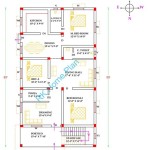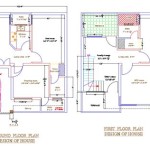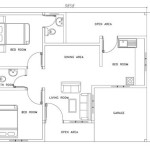Essential Aspects of a Comprehensive House Wiring Plan
A well-conceived house wiring plan is the cornerstone of a safe and efficient electrical system. It serves as a blueprint, guiding the installation and layout of electrical components throughout your home. By meticulously planning and executing your wiring system, you can enhance the functionality, safety, and value of your property.
1. Load Calculations and Circuit Design
Determining the electrical load on each circuit is paramount. This involves calculating the total wattage of appliances, lighting, and other electrical devices that will be connected to each circuit. Based on these calculations, the appropriate wire size and circuit breaker capacity can be selected to ensure the safe operation of the circuit.
Circuit design also involves determining the number of circuits required for each room or area of the house. Proper circuit distribution ensures that electrical loads are evenly distributed throughout the system, preventing overloading and potential hazards.
2. Branch Circuit Layout
The branch circuit layout outlines the specific paths of electrical circuits throughout the house. It includes the location of outlets, switches, junction boxes, and other electrical components. The layout should be designed to provide convenient access to electrical points while adhering to safety codes and standards.
Proper spacing and placement of outlets and switches are crucial for both functionality and safety. Outlets should be positioned to accommodate appliances and devices without the need for extension cords, while switches should be located at convenient points of entry and exit.
3. Grounding and Bonding
Grounding and bonding are essential for electrical safety. Grounding establishes a low-resistance path to earth for excess current to dissipate, protecting against electrical shocks and fires. Bonding connects metal components of the electrical system together, including conduit, enclosures, and appliances, to ensure they are all at the same electrical potential.
Proper grounding and bonding not only enhance safety but also improve the overall performance of the electrical system by reducing voltage fluctuations and EMI (electromagnetic interference).
4. Wiring Materials and Techniques
The choice of wiring materials and techniques used in the house wiring plan is crucial for ensuring safety and durability. Copper or aluminum wires are the most commonly used conductors, and the appropriate wire size must be selected based on the load calculations.
Proper wiring techniques, such as proper splicing and termination, are essential to ensure reliable connections and prevent overheating or arcing. Conduit or cable trays may be used to protect wires from physical damage and environmental factors.
5. Electrical Panel and Service Entrance
The electrical panel is the central hub of the house wiring system, housing circuit breakers or fuses that protect each circuit from overloads. The panel should be located in an easily accessible and visible area, and its capacity should be sufficient to handle the total electrical load of the house.
The service entrance is the point where electricity enters the house from the utility company. It typically consists of a transformer, meter, and main disconnect switch. The service entrance must be sized to handle the anticipated electrical demand of the property.
6. Code Compliance and Inspection
It is imperative to ensure that the house wiring plan complies with all applicable electrical codes and standards. These codes are designed to protect the safety of occupants and property from electrical hazards.
Once the wiring is installed, it should be inspected by a qualified electrician to verify its compliance with the plan and codes. Electrical inspections are typically required by law and are essential for obtaining permits and insurance.
7. Future Expansion and Flexibility
Consideration should be given to future expansion and flexibility when designing the house wiring plan. This involves anticipating the potential need for additional electrical outlets, circuits, or even a larger service entrance capacity.
By planning ahead, you can avoid the need for costly retrofits or upgrades in the future. For example, installing extra conduit or leaving spare capacity in the electrical panel can provide flexibility for future modifications.
In conclusion, a comprehensive house wiring plan is essential for ensuring the safety, efficiency, and functionality of your electrical system. By meticulously planning and executing all aspects of the wiring system, you can create a reliable and future-proof electrical infrastructure for your home.

Free House Wiring Diagram Edrawmax

House Wiring Diagram Everything You Need To Know Edrawmax
Create An Electrical Plan Roomsketcher Help Center

Electrical House Plan Details Engineering Discoveries Wiring Diagram Home

House Wiring Diagram Everything You Need To Know Edrawmax

It S Electrical

Creating Electrical Plans 1st Construction

Home Wiring Plan Making Plans Easily House Electrical Layout

House Wiring Diagram Everything You Need To Know Edrawmax

Floor Plan And Wiring Diagram Scientific








